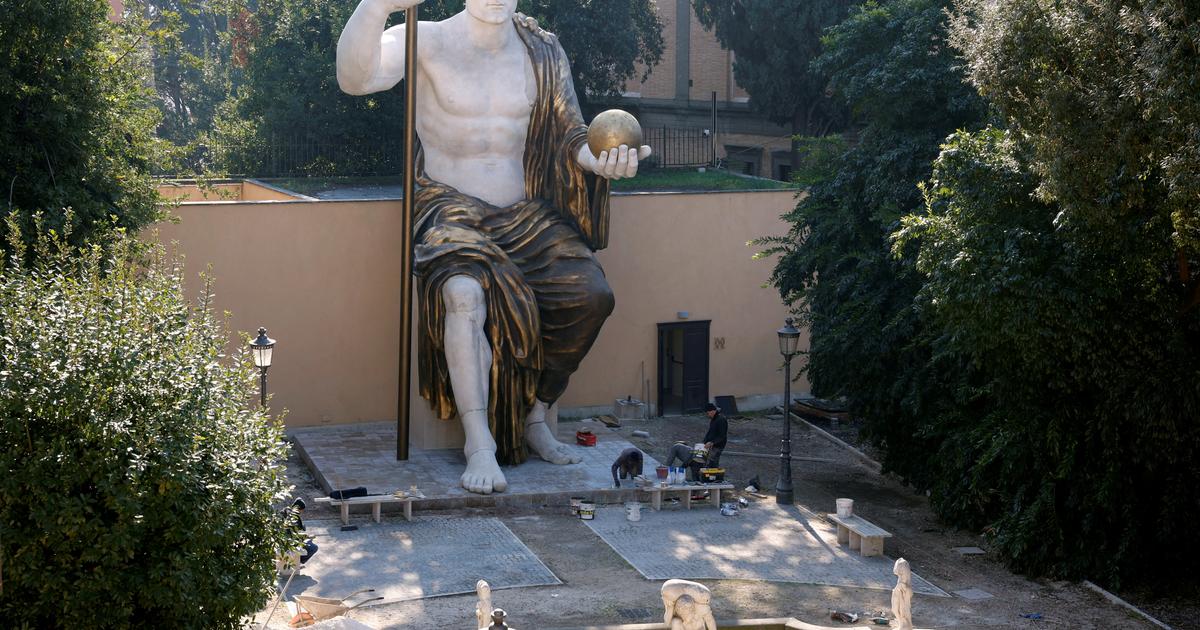Two feet, two (right) hands, a knee, a bicep and an imposing head: these marble fragments were used to create, in Rome, a reproduction of a colossal statue of Constantine.
The reconstruction of the 13 meter high statue representing the seated emperor, his body draped in a bronze cloak was unveiled, recreating the majesty of the statues erected in ancient Rome to the glory of the gods and emperors.
This statue is the largest of which remains have been found in Rome, Claudio Parisi Presicce, curator in charge of Rome's monuments, told the press.
“The impression we have in front of this statue of the emperor reproduces the sensation of his subjects when faced with an imperial image
,” said the official.
It is presented in the garden of the Capitoline Hill overlooking the Roman forum.
But it was not the largest in Rome, the record being held by the Colossus representing the Emperor Nero, 30 meters high and erected near the Flavian amphitheater to which it would soon give its name Colosseum.
Read alsoThe missing finger from the colossal statue of Constantine found in the Louvre reserves
For hundreds of years, archaeologists, historians and tourists have had to use their imagination to imagine the statue of Constantine based on the marble fragments exhibited in the Capitoline Museums.
It was not until the late 19th century that it was identified as a depiction of Constantine the Great, who moved the empire's capital from Rome to Constantinople before his death in 337. The statue has been reconstructed in resin based on the analysis of around ten fragments preserved on the Capitol since 1486: two hands and two feet, a knee and a calf, two fragments of biceps with protruding veins, a section of the torso, without forgetting the massive head.
“No one had ever thought of studying the relationship between these different fragments
,” underlined Claudio Parisi Presicce.
“Jupiter Traits”
Extensive studies determined that parts of the Constantine statue may have been recycled from an older statue.
Details on the chin further suggest that the original statue had a beard.
One hypothesis is that the statue represented Jupiter and was located in the most important temple at the top of the Capitol, the foundations of which are still visible today.
Coins and medals from the period before Constantine show a seated Jupiter, his right knee revealed, in the pose adopted for the statue of Constantine.
“Constantine is only the last in a long line of emperors who were represented in the guise of Jupiter
,” according to Claudio Parisi Presicce.
The reproduction will remain in place at least until 2025, the jubilee year during which millions of Catholic pilgrims are expected in Rome.
Its final location will be determined later.
The project was subsidized by the Prada Foundation for an unspecified amount.

